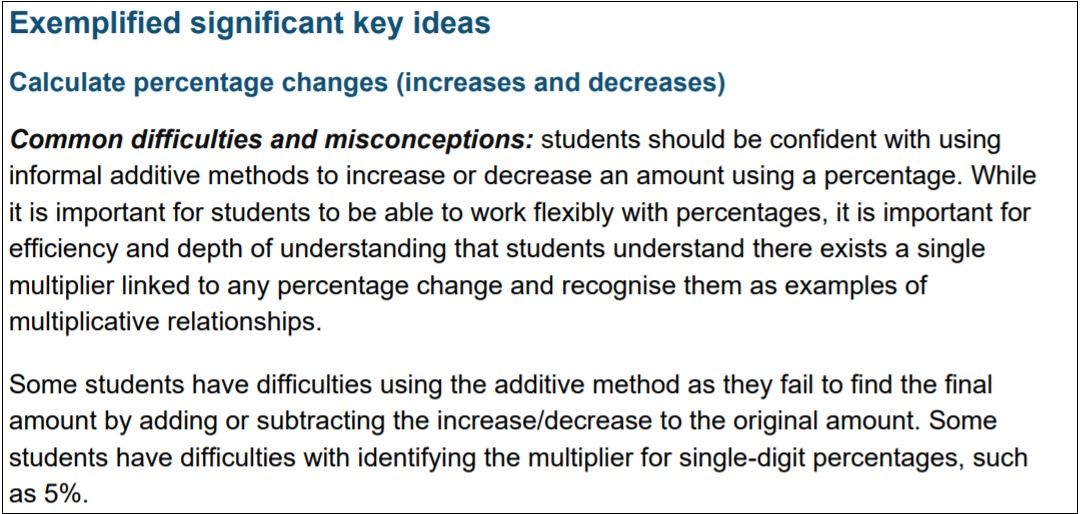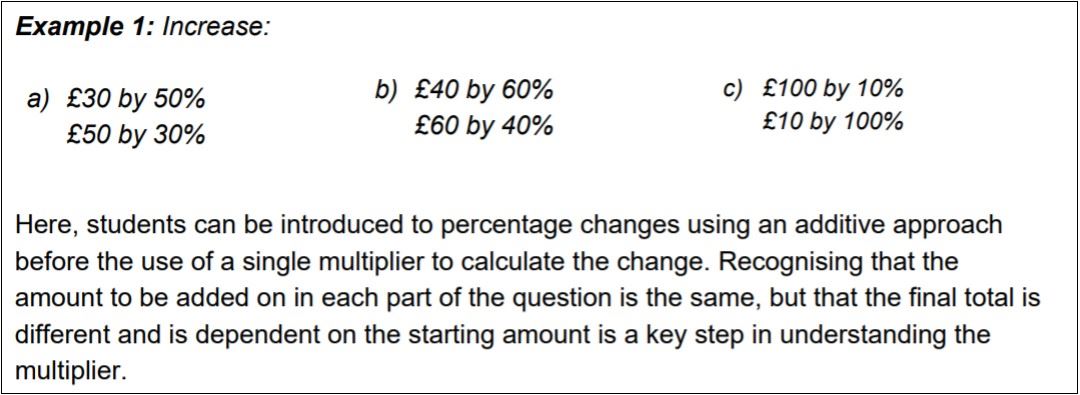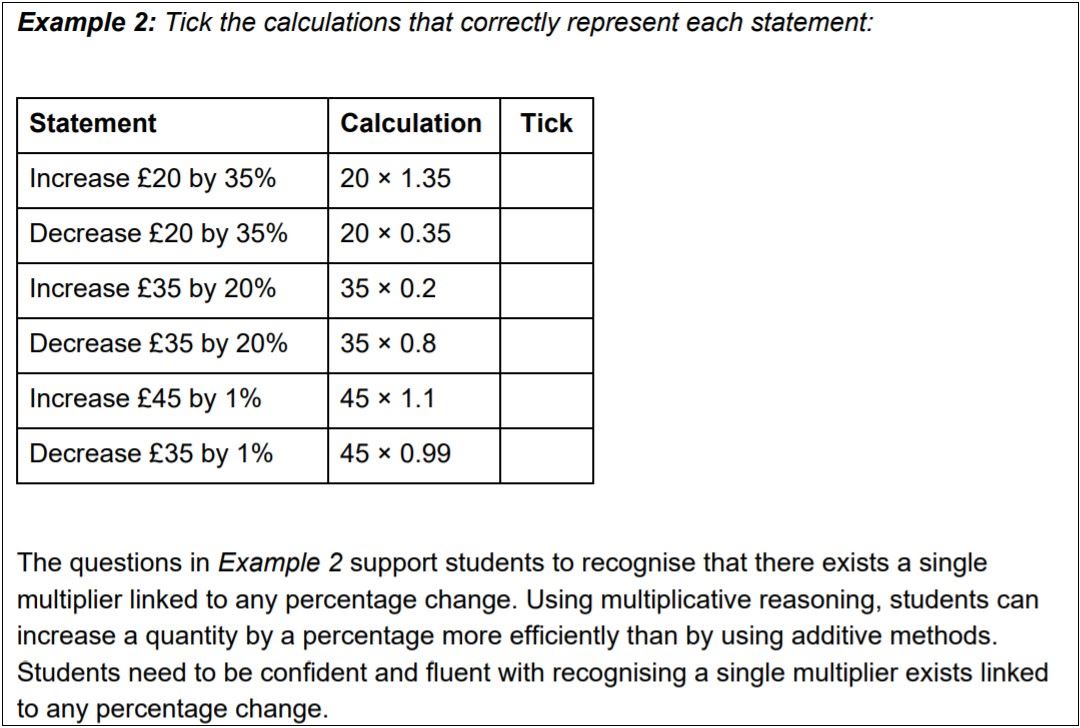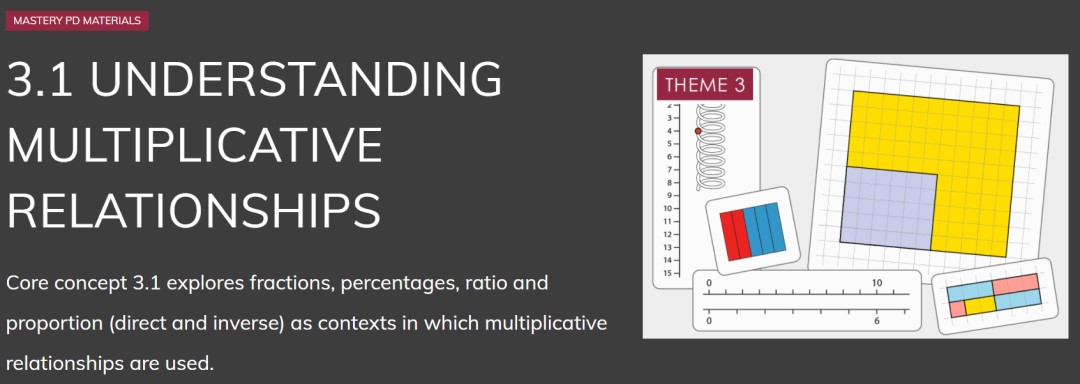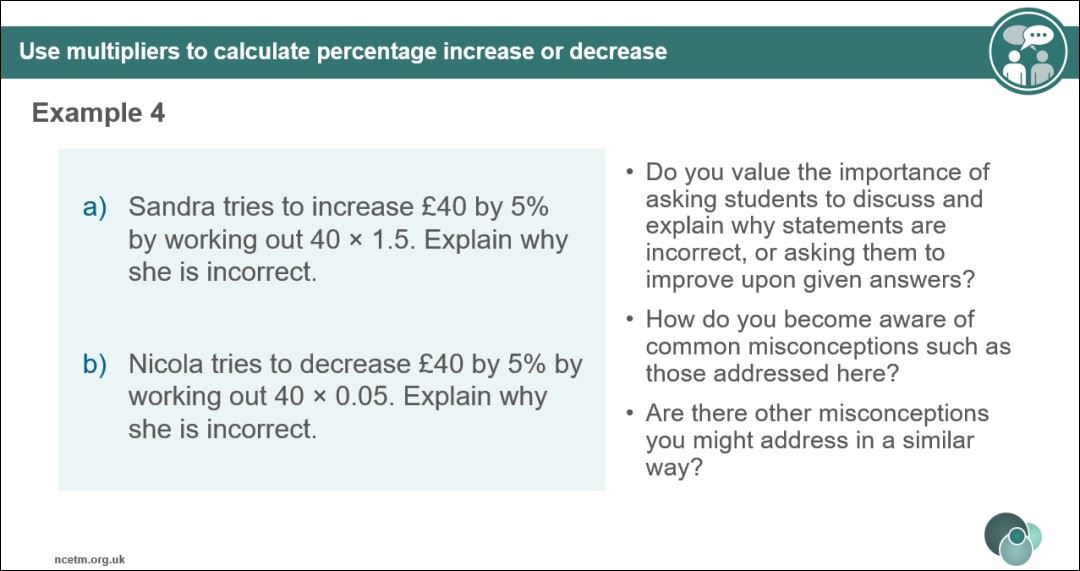Using the DfE’s KS3 maths guidance in secondary teaching
Four steps to help you plan and teach percentage change
25/01/2022
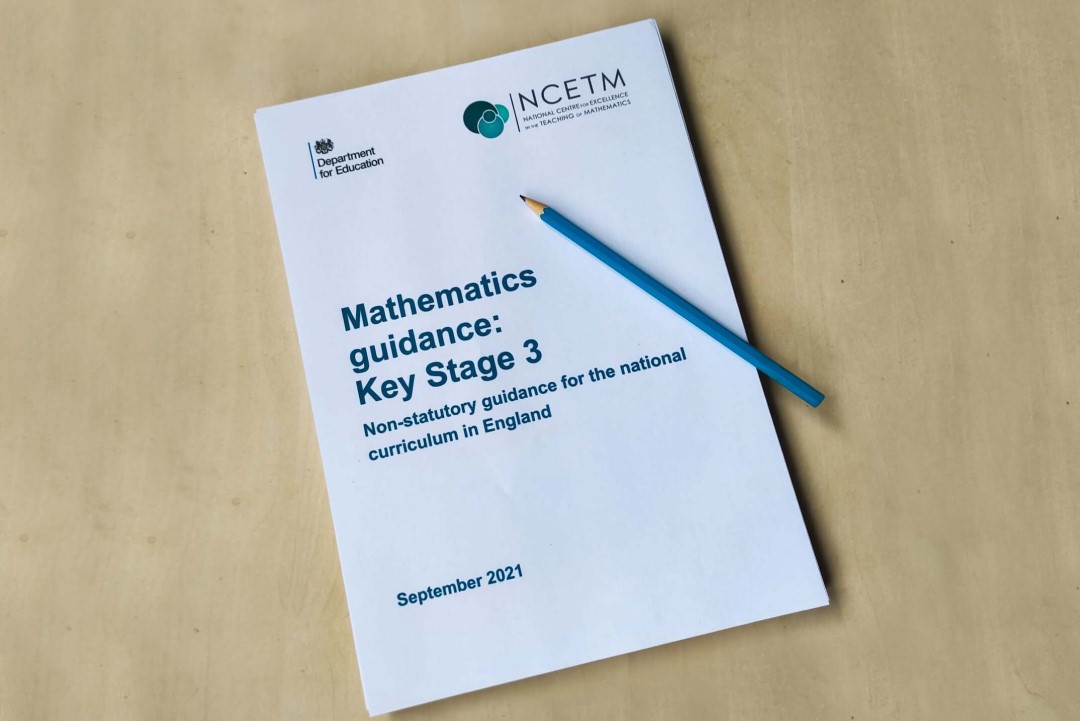
The DfE’s KS3 maths guidance is a comprehensive document, at nearly 300 pages. In this article we suggest one way to use it, with four steps to plan and develop the teaching of percentage change. As well as drawing on the guidance itself, we mention other complementary materials on the NCETM website. The same steps could be followed for almost every topic in the guidance.
Step 1: Locate the topic in the guidance
Search for percentage in the Contents section on pages 3 and 4 at the start of the DfE guidance document. You’ll find it within the topics listed for Year 8 spring term. A hyperlink takes you straight to page 160, where percentage change is covered in the body of the document.
Step 2: Understand the background detail
Starting on page 160, there are seven pages devoted to the broad area of Understanding multiplicative relationships: percentages and proportionality. There are sections to help you and colleagues consider the prior learning necessary for students to embark on this new area, and how to check it. There are also lists of the key ideas within this area of maths, and a suggested order of progression through these ideas. This will help you, or colleagues in departmental discussions, think about and plan a whole unit of teaching, including the specific topic of percentage change.
Step 3: Focus on the key ideas
One of the ten key ideas listed is Calculate percentage changes (increases and decreases) and this is developed in detail in a section called Exemplified significant key ideas, starting on page 163.
There are 52 of these sections in the DfE guidance as a whole – each listing common difficulties and misconceptions students have and providing examples than can be used in classrooms.
When planning to teach percentage change, you can choose from several examples with associated tips and suggestions, including these two:
Step 4: Explore additional content
On the NCETM website, you will find even more advice on teaching percentage change, and associated materials for fruitful professional development discussions.
For example, this is one of 52 PowerPoints, matching and complementing the Exemplified significant key ideas in the DfE guidance. They can all be found in the Teaching for Mastery section of the NCETM website. The PowerPoint on teaching percentage change can be found in the part of Theme 3 devoted to Understanding Multiplicative Relationships.
Here’s an example of one of the slides in that PowerPoint:
On the same page of the NCETM website as this key idea PowerPoint, there’s also a link to a document where you can, if necessary, check your own subject knowledge in the area of multiplicative relationships, and a few videos also relevant to this area of maths.
The four steps above can be followed to support more than 50 areas of Key Stage 3 maths teaching. If you do so, we hope that gradually you become more familiar with the content of the DfE guidance and all the complementary material on the NCETM website.

